
Improper nutrition, combined with more harmful absorption of nutrients, leads to the progression of gout. This disease develops when the level of uric acid in the blood exceeds the allowable limits (350 μmol / l for men and 350 μmol / l for women). Abnormalities in metabolic processes lead to salts of this acid settling on the walls of intestines, blood vessels, joint surfaces and damaging important organs of human life.
Over time, the disease becomes chronic, with frequent relapses. In the acute period, patients experience painful pain at the site of the pathological process. A gout diet will help normalize uric acid levels and reduce the incidence of relapses.
Why diet for gout?
An important task of therapeutic measures is to reduce the nature and frequency of the disease. This is achieved by reducing the amount of uric acid in the body.
Gout attacks are caused by:
- consuming large amounts of high purine foods;
- metabolic disorder.
Diet optimization allows you to initiate the right processes of assimilation and selection of substances. Therapeutic measures to address the causes of the disease are closely linked to adherence to the limitations of certain food dependencies. You can use a well-designed diet to slow down the progression of your disease.
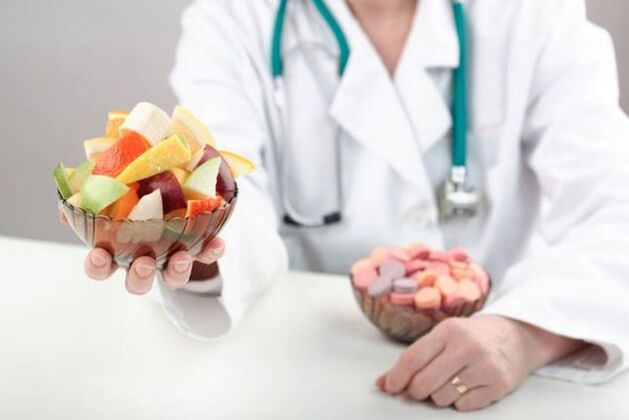
The food that makes up a person’s daily diet should include foods that contain large amounts of substances that are beneficial to the body.
Nutritional therapy for gout aims to reduce symptomatic manifestations by eliminating the food ingredients that provoke them. The products that a person consumes on a daily basis have a huge impact on their health in general, being responsible for the chemical processes that take place in the human body throughout their lives.
What not to eat in case of gout?
Based on the studies, scientists have defined a list of products that directly provoke the primary development of the disease and its further progression.
Do not eat due to gout:
- smoked spicy cheese and cheese products;
- cholesterol-rich meat and bone products (puree of young animals and pigs, hooves, buldyzhki);
- meat and bone fats, ears;
- high fat fish (sardines, sprats);
- pickled vegetables, pickled fruits (cabbage, watermelon, cucumber, apple);
- hot, cold smoked products;
- legumes (peas, beans, soybeans, lentils);
- greens containing oxalic acid (spinach leaf, sorrel, rhubarb root);
- hot spices, sauces;
- some varieties of vegetable plants (brussels sprouts and cauliflower, radishes);
- internal organs (kidneys, liver, lungs, heart, brain) of animals obtained from the carcass of carcasses;
- oatmeal;
- confectionery fat products;
- any percentage of alcohol;
- fruits and berries (grapes, raspberries, figs);
- hot, spicy and ethereal spices (bay leaves, horseradish, chili peppers);
- animal fats and oils (lard, margarine, lard);
- canned meat, fish and vegetable products.
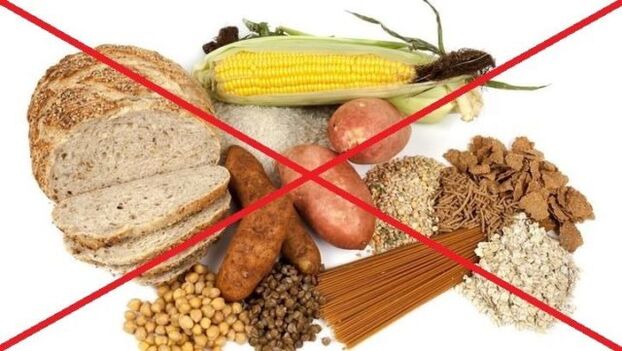
If the diet is unbalanced or contains large amounts of fatty, spicy or heavy food for the digestive system, a person’s metabolism may be disrupted.
List of products whose use is recommended to be restricted:
- coffee, strong tea;
- butter;
- plum;
- night vegetables (eggplant, tomatoes, peppers);
- table salt, granulated sugar;
- mushrooms (only at the time of release).
In order to alleviate the seizure and maintain the state of release, it is important to remove the above foods from the diet for a long time.
What can you eat with gout?
List of foods recommended for patients with the disease:
- dietetic meat products (rabbit, poultry, lean beef);
- lean white fish (pike, perch, cod, pollock);
- bran and rye bread;
- chicken eggs (except yolks);
- cereals (rice, wheat, buckwheat, millet, pearl barley);
- fresh vegetables (beets, carrots, cucumbers, cabbage, potatoes);
- seasonal fruits, berries (watermelon, melon, apricot, strawberry, peach, cherry, blackberry, green apple);
- pasta;
- walnut seeds (hazelnuts, walnuts, cedar);
- herbal teas and decoctions (Dubrovnik, basil, catnip);
- fermented dairy products, cottage cheese;
- freshly squeezed juices, fruit drinks, compotes;
- boiled tomatoes;
- spices (turmeric, fennel, basil);
- vegetable oil (olive, canola).

Nutritional therapy for gout helps the patient to quickly get rid of unpleasant and painful symptoms at home.
Limited amounts of natural honey are useful for gout. This product is suitable as a sugar substitute.
Honey has several beneficial properties:
- immunostimulant;
- antioxidant;
- improving metabolic processes;
- bacterial.
You should not abuse this bee product during the acute period. Patients with this disease should consume foods rich in vitamins, trace elements and amino acids. A useful supplement for medicated fish oil gout.
General eating rules
Excluding certain prohibited foods from the regular menu does not guarantee immediate relief. In addition, the list of products varies depending on the stage and severity of the course of the disease. Thus, the diet of gout is subject to stricter restrictions during exacerbation than during remission.
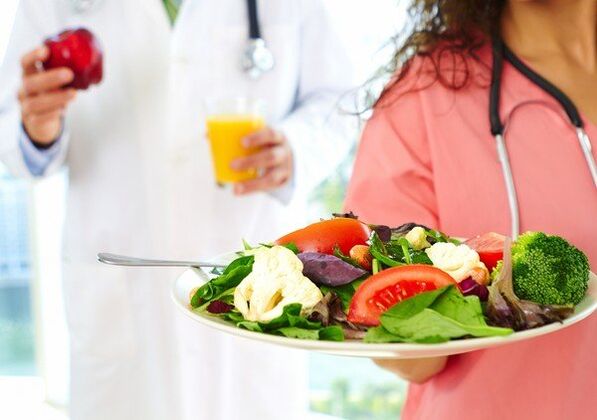
There is a common set of rules for patients with this disease that are important to follow in diet therapy:
- Eat food in small portions several times a day at short intervals (5-6 times). Hunger causes an increase in acetone in the urine. This, in turn, can exacerbate the course of the disease.
- Chew food thoroughly, do not overeat.
- Limit the amount of table salt used to prepare meals (up to 5 grams per day). The salt has the property of retaining fluid in the tissues, which in turn leads to the deposition of uric acid salts.
- Optimizes body fluid balance. To do this, it is recommended to drink at least 2 liters a day.
- Have fast days. Preferably vegetables, dairy products and fruits (excluding products prohibited for consumption).
- Stick to restrictions for a long time as short-term use of a therapeutic diet is ineffective.
Foods that cause a rise in uric acid and insulin levels in the blood should be excluded for people with severe metabolic disorders who have a history of diabetes and gout. The goal of the gout and diabetes diet is to reduce these indicators to avoid the development of exacerbations and complications.
How to properly prepare food?
Restricting the list of grocery stores is not the only thing to consider. It is important to choose the right cooking method when preparing food.
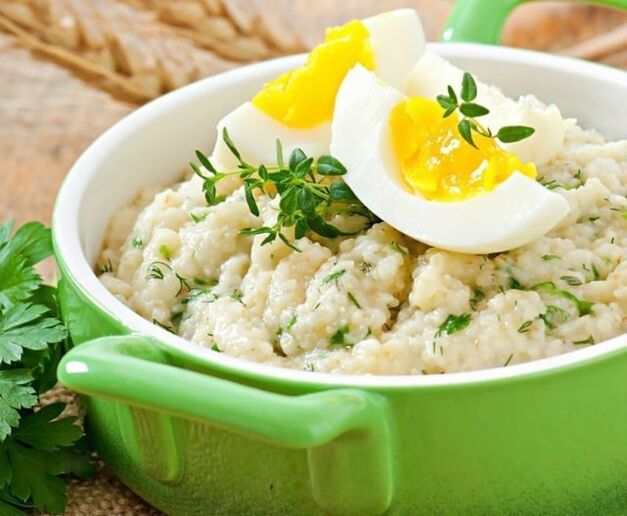
There are no special requirements for the preparation of the products, except for meat processing.
Cooking is permitted in the following ways:
- for a couple;
- baking;
- vaccination;
- hot;
- languor.
Cooking is contraindicated:
- baking;
- smoking;
- salting and pickling;
- fermentation.
Do not use obsolete, burnt food. The temperature control of the food consumed should be optimal for the food and should not exceed 40 degrees Celsius. The food should not be coarse and hard. If necessary, each dish can be shredded with a blender.
Effective diet: menu every day
Medical nutrition should meet the physiological needs of patients in terms of important ingredients (protein-carbohydrate-fat balance), calories, vitamins, trace elements, amino acids.
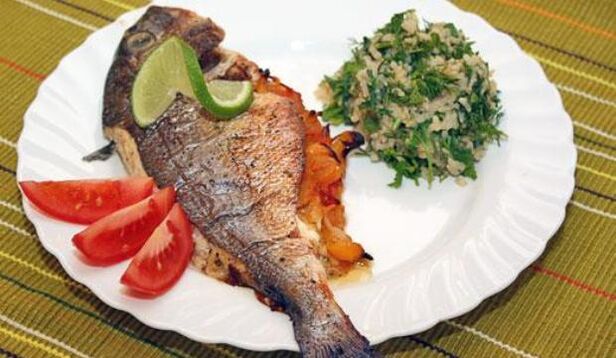
Approximate diet for gout and high uric acid:
One day
First breakfast: boiled cod, mashed potatoes, black bread, white cabbage salad, flavored with sour cream, a cup of weak coffee with saccharin.
Second breakfast: casserole with cottage cheese, boiled eggs, bran bread, tea drink.
For lunch: vegetarian soup with roasted roots and potatoes, beef stew, buckwheat porridge, fresh cucumbers, 1 apple.
Dinner: carrot slices, pasta, milk, biscuit biscuits.
At night: 200 ml of kefir.
2 days
First breakfast: braised white cabbage, 1 boiled egg, black bread, cappuccino.
Second breakfast: cappuccino, biscuit biscuits.
For lunch: lean borscht, bran bread, fried poultry fillet, boiled rice, fruit jelly.
For dinner: stewed potatoes with vegetables, casserole with vegetables, bran bread with butter, a glass of broth.
At night: 250 ml of cottage cheese.

3 days
First breakfast: vegetable salad (white cabbage, carrots, apples), light coffee.
Second breakfast: cottage cheese with sour cream, rosehip broth.
For lunch: barley soup with sour cream, steam slices, mashed potatoes, berry jelly, wholemeal bread.
For dinner: carrot slices with fruit, semolina, a glass of milk.
Before going to bed: steamed prunes.
4 days
First breakfast: grated carrots with sour cream, wheat porridge, a glass of green tea.
Second breakfast: dried fruit slices, compote, biscuit biscuits.
For lunch: Milk noodles, boiled chicken with roasted pumpkin and potatoes, fruit jelly, black bread.
For dinner: baked cheesecake in the oven, carrots and apple slices, a glass of tea with lemon.
At night: 200 ml of hot milk.
5 days
First breakfast: porridge cooked in buckwheat milk, green tea.
Second breakfast: a glass of fresh carrots.
For lunch: vegetable rice soup with sour cream, boiled beef, beet caviar, basil infusion with honey, black bread.
For dinner: pumpkin casserole with sour cream, a glass of weak tea, biscuits.
Before going to bed: rose hips infused with honey.
6 days
First breakfast: chicken protein omelette, steamed beets, white bread, a glass of weak coffee.
Second breakfast: zucchini casserole, fruit and berry compote.
Lunch: vegetarian barley soup, boiled potatoes, stewed meatballs, jelly, black bread.
Dinner: rice cooked in milk, weak tea drink.
Before going to bed: a glass of yogurt.
The usual diet is drawn up by a doctor. The combination of dietary meals is varied. Diet # 6 is common for gout. Its main principles are the exclusion of foods and foods consisting of high purine components, the addition of alkaline beverages to the diet, and gentle processing during cooking. A self-compiled menu that limits the amount and nature of food can lead to a protracted course of the disease.















































































